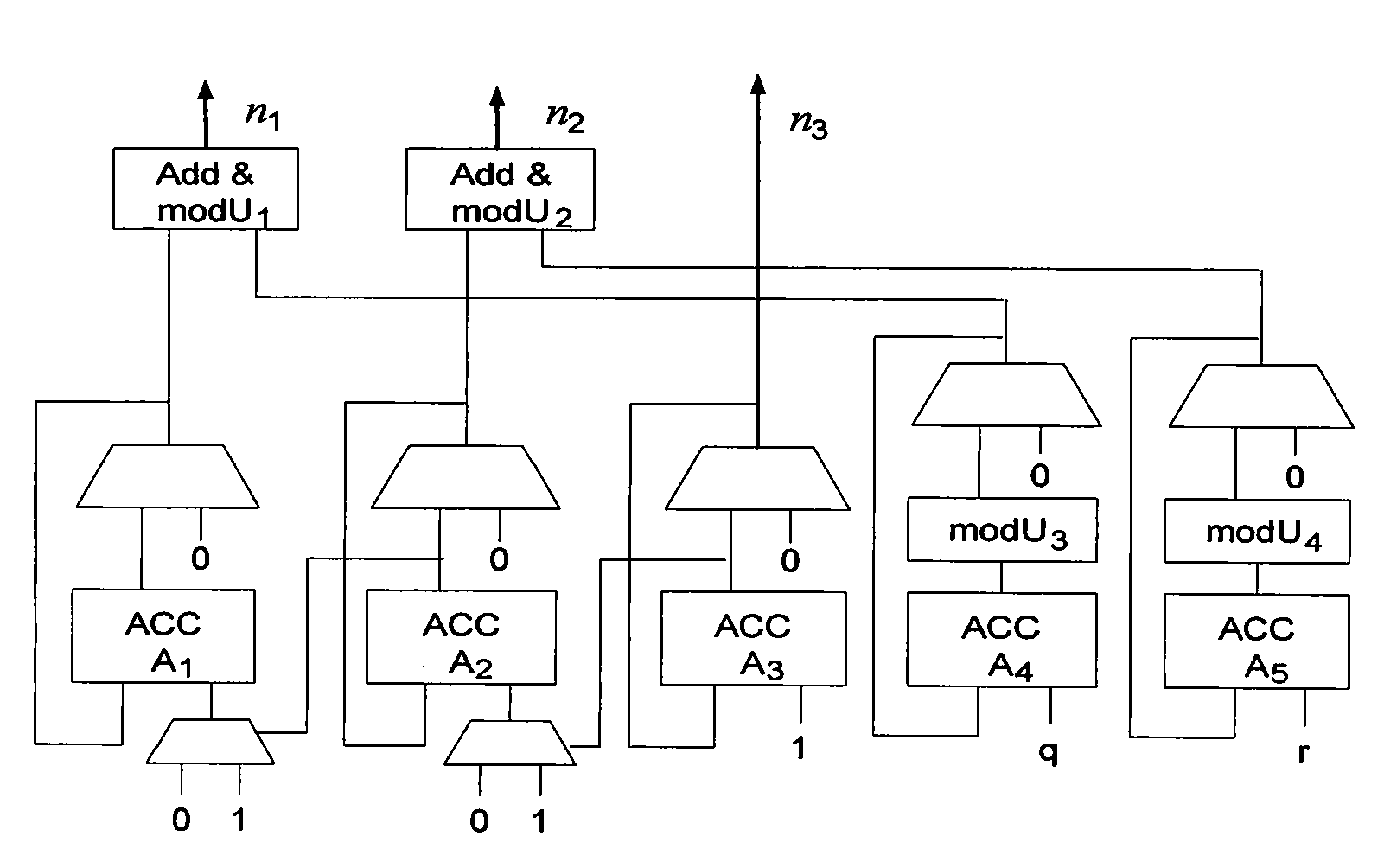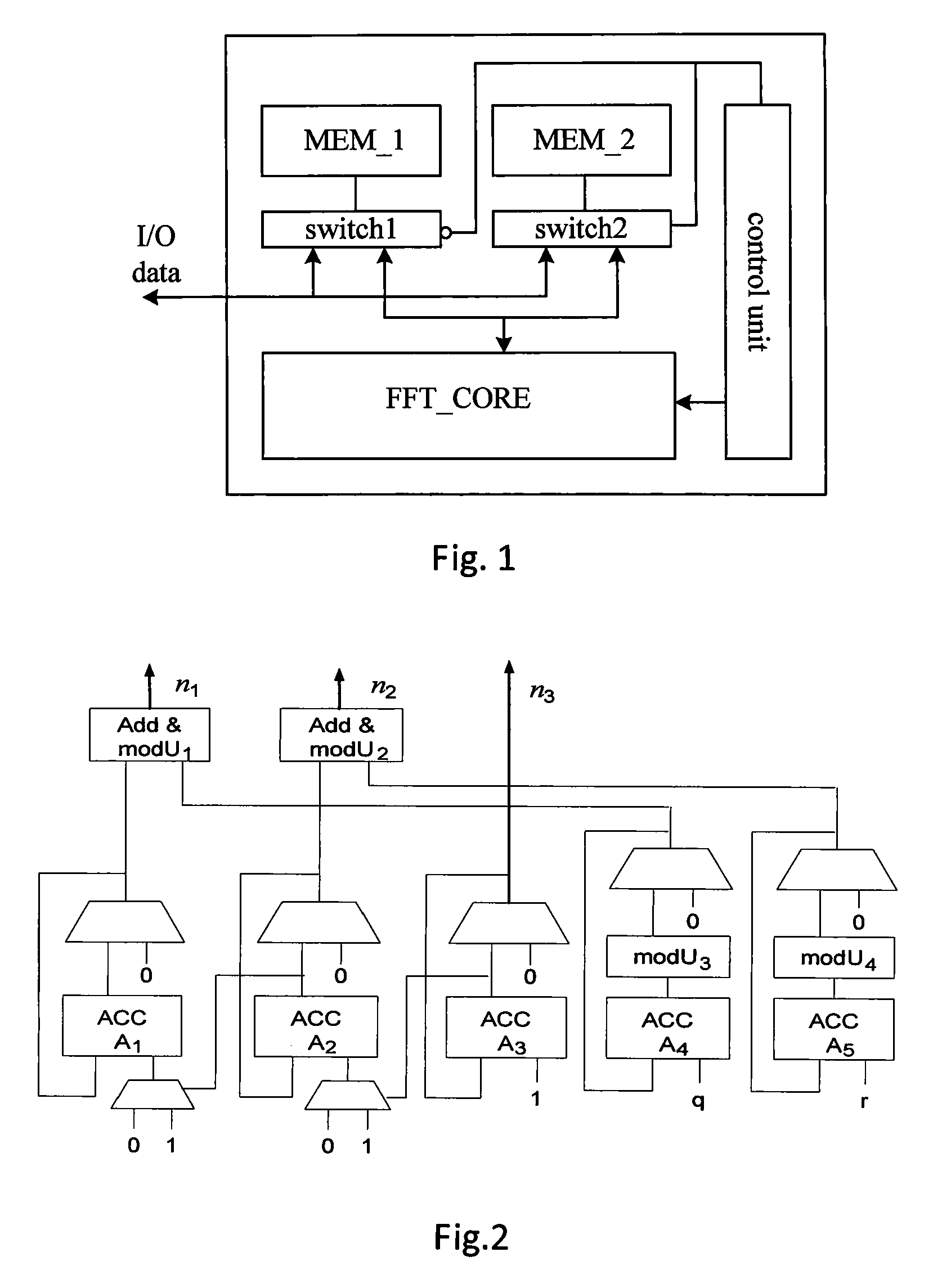Memory-based fft/ifft processor and design method for general sized memory-based fft processor
- Summary
- Abstract
- Description
- Claims
- Application Information
AI Technical Summary
Benefits of technology
Problems solved by technology
Method used
Image
Examples
case i
[0022] If N1 and N2 are relative prime, we choose A2 and B1 such that
A2=p1N1 and A2=q1N2+1
B1=P2N2 and B1=q2N1+1
[0023]Here, p1, q1, p2 and q2 are all positive integers. Then, the definition of DFT could be rewritten as Eq. (2):
X(k1,k2)=∑n2∑n1x(n1,n2)WN1n1k1WN2n2k2=∑n2{∑n1x(n1,n2)WN1n1k1}WN2n2k2=∑n2y(k1,n2)WN2n2k2(2)
case ii
[0024] If N1 and N2 are not relative prime, we choose A2=B1=1. Then, the definition of DFT could be rewritten as Eq. (3):
X(k1,k2)=∑n2∑n1x(n1,n2)WN1n1k1WN2n2k2WNn2k1=∑n2{WNn2k1∑n1x(n1,n2)WN1n1k1}WN2n2k2=∑n2WNn2k1y(k1,n2)WN2n2k2(3)
[0025]Eqs. (2) and (3) imply that a larger size N-point FFT could be computed by two smaller sized N1-point and N2-point FFT in the first and second stages respectively. For the fixed n2, the input data of the N1-point FFT in the first stage are x(n1, n2), n1=0, 1, . . . , N1−1. The output data of the first stage correspond to this n2 are y(k1, n2), k1=0, 1, . . . , N1−1. For the fixed k1, the input data of the N2-point FFT in the second stage are y(k1, n2), n2=0, 1, . . . , N2−1. The output data of the second stage correspond to this k1 are X(k1, k2), k2=0, 1, . . . , N2−1. The difference between Eq. (2) and (3) is that if N1 and N2 are not relative prime, there would have twiddle factor wNn2k1 between the first and second stages as shown in Eq. (3).
[0026]N...
PUM
 Login to View More
Login to View More Abstract
Description
Claims
Application Information
 Login to View More
Login to View More - R&D
- Intellectual Property
- Life Sciences
- Materials
- Tech Scout
- Unparalleled Data Quality
- Higher Quality Content
- 60% Fewer Hallucinations
Browse by: Latest US Patents, China's latest patents, Technical Efficacy Thesaurus, Application Domain, Technology Topic, Popular Technical Reports.
© 2025 PatSnap. All rights reserved.Legal|Privacy policy|Modern Slavery Act Transparency Statement|Sitemap|About US| Contact US: help@patsnap.com



